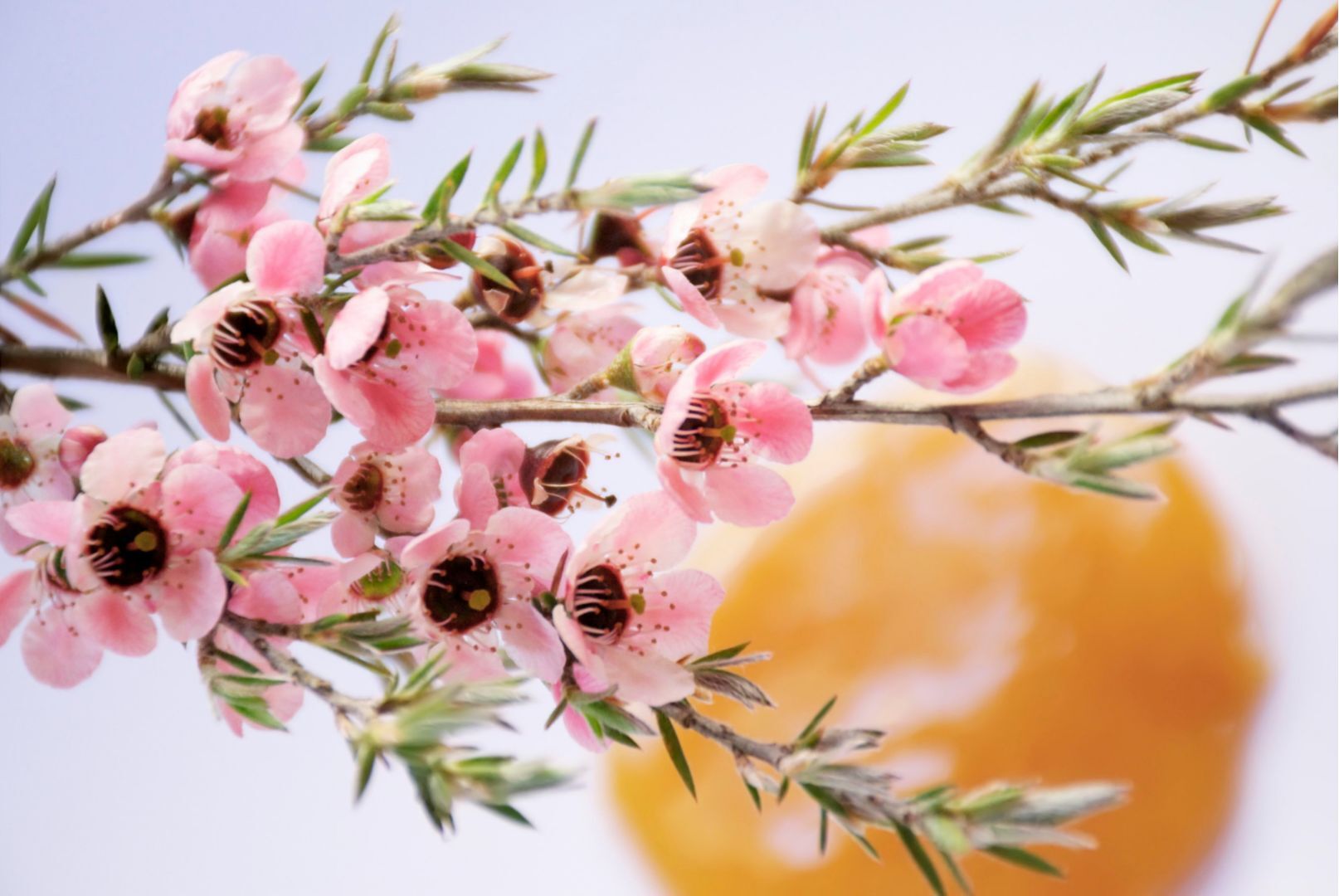

Manuka honey isn’t just your usual honey. Sure, it’s sweet, gloopy and tastes delicious on your porridge or cereal — but manuka honey has additional special properties that provide interesting, surprising health benefits.
Just in case you’re a bit confused about manuka honey or what methylglyoxal (MGO) content means, let us break things down for you. What is manuka honey, where does it come from and how can it benefit our health?
We’ve got the answers for you (plus amazing manuka honey skin care), just keep reading!
What is Manuka Honey and MGO (methylglyoxal)?
Manuka honey is a type of honey that is native to New Zealand and Australia. In recent years, it has gained a lot of attention for the noteworthy health benefits it has been reported to convey — becoming popularly used as a natural remedy to assist with an array of health conditions.
The thing that sets manuka honey apart from other types of honey is the presence of the organic compound, methylglyoxal (MGO).
It wasn’t until 1990 that Professor Peter Molan at Waikato University in New Zealand discovered that certain manuka honeys have additional, stable antibacterial properties that do not exist in other honey.
In 2006, Professor Thomas Henle at Technical University of Dresden discovered very high levels of naturally-occurring methylglyoxal (MGO) in manuka honey are responsible for its unique antibacterial activity.
Methylglyoxal is the key, all-important ingredient in manuka honey that sets it apart from other honeys.
Where Does Manuka Honey Come From?
Manuka honey is made by bees pollinating manuka bushes (also known as tea trees, scientifically as Leptospermum scoparium), a species of flowering plant native to New Zealand and south-eastern Australia.
This honey, with its naturally high levels of methylglyoxal (MGO), has been adapted into a range of manuka honey products which can bring some useful, interesting health benefits.
Next up, a little more about the MGO content of manuka honey.
More About the Methylglyoxal (MGO) Content of Manuka Honey
In 2008, a rating system for the methylglyoxal content of the honey was introduced — the MGO™ Manuka Honey Certification System, founded by Manuka Health. The higher the methylglyoxal content of a manuka honey product, the stronger the antibacterial activity.
This robust, science-based system allows us to easily understand how much of this bacteria-busting MGO is in a product. Manuka honey products are tested, certified and rated based on their minimum level of methylglyoxal, ranging from 30mg/kg to 550mg/kg.
For example, an MGO™ 100+ product contains 100mg of methylglyoxal per kg of manuka honey; 250+ contains 250mg of methylglyoxal per kg of manuka honey and so on for 400+ and 550+. Methylglyoxal occurs naturally up to 600mg/kg.
What Are the Health Benefits of MGO (methylglyoxal) in Manuka Honey?
From treating wounds to soothing a sore throat and even improving oral health, the methylglyoxal content of manuka honey has been scientifically shown to offer up a mix of potentially interesting health benefits.
- For Wound Healing
The antioxidant and antimicrobial properties of manuka honey have been shown to assist with wound healing and the regeneration of tissue — researchers associated this with the presence of MGO within the honey.
One study even showed that 88% of those who used manuka honey saw a decrease in wound size; another found that manuka honey treatment decreased scarring pain and stiffness.
In 2007, the ingredient was given approval in the US for the treatment of wounds.
- For Ulcers, Sore Throats & Wound Infections
The medicinal properties of honey have been much-noted in clinical research — it is antibacterial and anti-inflammatory, making it popular for the treatment of throat infections, mouth ulcers and even as a nutritious supplement.
Research has shown that manuka honey, specifically, works against Streptococcus mutans, the bacteria that causes a sore throat.
A minimum methylglyoxal content of 400mg/kg (MGO™ 400+ and MGO™ 550+) is known to be beneficial for this purpose. As a rule, the greater the methylglyoxal content of the manuka honey product you choose, the greater the antibacterial properties it offers.
- For Oral Health
No one wants plaque, gum inflammation or tooth decay. Usually, sweet treats are bad for our teeth — interestingly, manuka honey has been shown to be useful in improving our oral wellbeing. Studies have highlighted that the antibacterial activity within manuka honey can stifle the growth of harmful oral bacteria.
- For Healthy Skin
Evidence is building to show that honey-based products can be applied topically to treat cracked, dry skin. To quote one comprehensive study on topical treatment using honey, ‘manuka honey eliminates bacteria, resolves chronic inflammation, and promotes faster wound healing’.
One recent piece of research also highlighted that manuka honey is potentially useful for the treatment of eczema, with lesions ‘significantly improved post MH (manuka honey) treatment versus pre-treatment, as compared to control lesions.’
Wild Naturals Manuka Honey Products
At Wild Naturals, we’re a natural skin care brand that offers skin care products that help all of us have healthier skin from head to toe. From hair care, body care, and face care, we have you covered with the best natural ingredients, no bad preservatives, and results that you can actually see! Shop the Wild Naturals store today!


